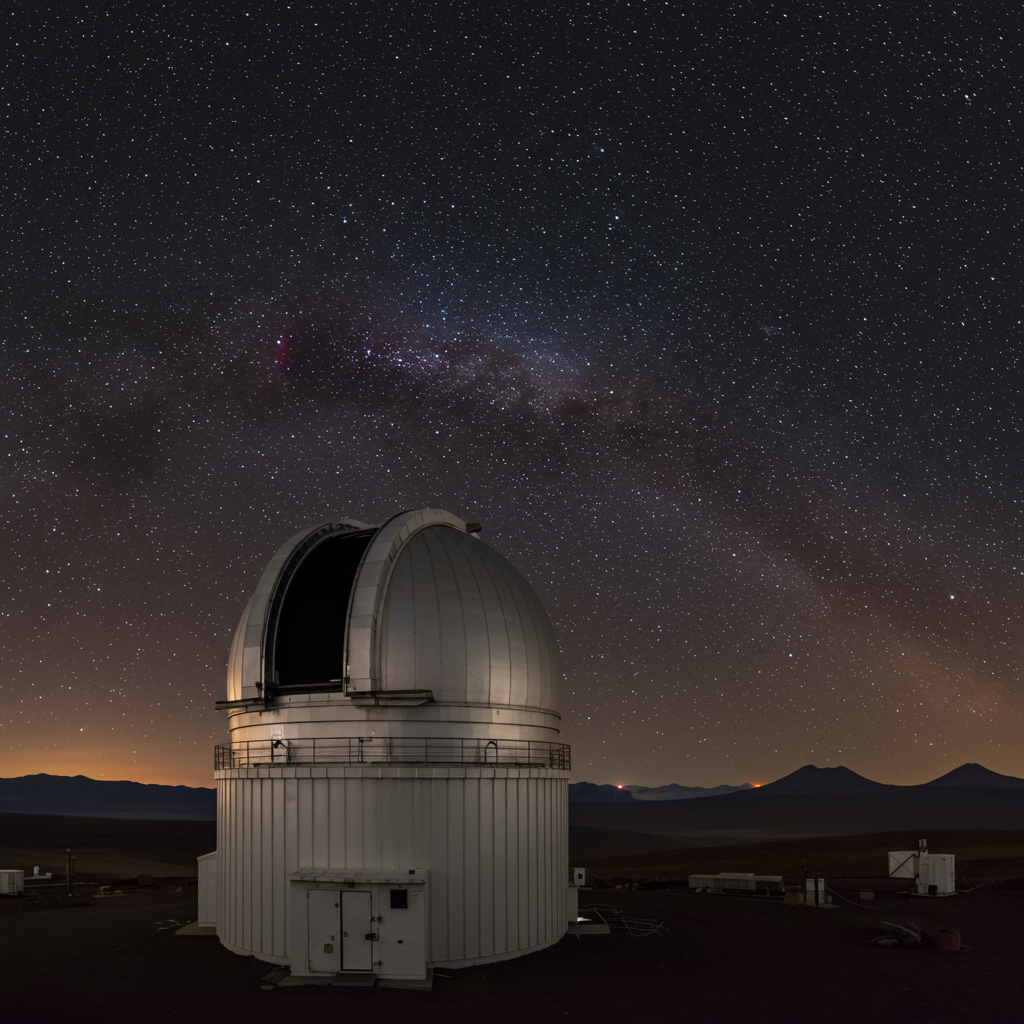A new era for astronomy is dawning high in the Atacama Desert of Chile. On the summit of Cerro Pachón, the Vera C. Rubin Observatory stands poised to begin a revolutionary survey of the southern night sky, powered by the world’s largest digital camera.
This isn’t just any camera; it’s the heart of the observatory’s ambitious mission, poised to unlock mysteries of the universe that have puzzled scientists for decades.
The World’s Largest Digital Camera
Formally known as the LSST Camera (Legacy Survey of Space and Time Camera), this instrument is a marvel of engineering. Weighing over 3,000 kilograms – about the weight of a small car but twice as dense – it boasts a staggering 3,200-megapixel resolution. To put that in perspective, a single image captured by this camera would require hundreds of ultra-high-definition TV screens to display fully. Its immense 1.57-meter lens holds a Guinness World Record as the largest ever made.
Built at the SLAC National Accelerator Laboratory in California, the camera was transported to Chile and successfully installed on the observatory’s Simonyi Survey Telescope in March 2025. This complex operation required years of planning and millimeter-precision execution. To ensure maximum clarity and minimize electronic noise when capturing faint light, the camera’s 189 sensors are cooled to an extreme -100°C. It also features a sophisticated system of six massive color filters (75cm in diameter) that can be swapped rapidly, giving it “superhuman” vision across different light wavelengths, from ultraviolet to near-infrared.
Mapping the Cosmos with LSST
This powerful camera is the core engine for the observatory’s primary mission: the Legacy Survey of Space and Time (LSST). This multinational project, significantly funded by the U.S. National Science Foundation and Department of Energy, is arguably the most comprehensive data-gathering mission in astronomy history. Starting in late 2025 after final testing, LSST will spend a decade repeatedly scanning the entire southern night sky.
Unlike previous surveys that capture static snapshots, Rubin Observatory will create a dynamic, high-definition time-lapse “movie” of the universe. It achieves this by taking numerous 15-second exposures across a vast 3.5-degree field of view – about seven times the width of a full moon – sweeping across the sky approximately 1,000 times every night. This repeated scanning allows LSST to capture not just objects, but how they change and move over time, providing astronomers with an unprecedented four-dimensional view of the cosmos.
Unlocking Cosmic Mysteries
The sheer volume of data generated by LSST is immense, estimated at over 9 billion gigabytes annually. This treasure trove is expected to lead to groundbreaking discoveries and shed light on some of the universe’s biggest puzzles:
Dark Matter and Dark Energy: A primary goal is to understand the nature of these mysterious components thought to dominate the universe and influence its expansion. Fittingly, the observatory is named after Dr. Vera C. Rubin, whose pioneering work provided crucial early evidence for dark matter’s existence by observing galaxy rotation curves. LSST’s precise measurements of distant galaxies will help test fundamental physics theories.
Solar System Census: The survey will revolutionize our understanding of our own cosmic backyard, tracking millions of previously unidentified asteroids and comets. It will also discover and map faint objects like brown dwarfs and potentially even distant, escaped planets in the solar neighborhood.
The Transient Universe: By repeatedly observing the same patches of sky, LSST will reveal objects that change or move. This includes discovering and monitoring explosive events like supernovae, variable stars, and other transient phenomena, with the goal of alerting astronomers globally to these changes within 60 seconds for rapid follow-up observations.
Mapping the Galaxy: The project aims to catalog an estimated 20 billion galaxies and create a detailed map of the structure and evolution of our own Milky Way galaxy.
A Global Endeavor
The Vera C. Rubin Observatory is a testament to international scientific collaboration, involving contributions from over 40 organizations across 28 countries. The vast datasets produced by LSST will be made publicly available to researchers in the U.S., Chile, and many international partners, enabling decades of future scientific research. The sheer scale of the data necessitates advanced data science techniques, including automation, artificial intelligence, and machine learning, to sift through the millions of changes detected every night.
With the LSST Camera successfully installed and final system testing underway, anticipation is high for the observatory’s “first light” images. A public unveiling of the first photos is even anticipated as early as June 23rd, offering the world a glimpse through this unprecedented eye on the cosmos.
As the Vera C. Rubin Observatory prepares to begin its decade-long survey, it promises not just a new map of the universe, but a dynamic, high-resolution record that will push the boundaries of our knowledge and carry forward the transformative legacy of its namesake.




